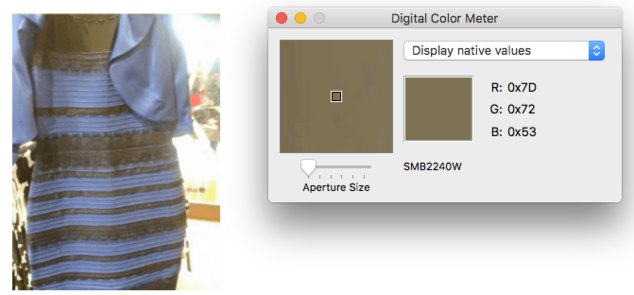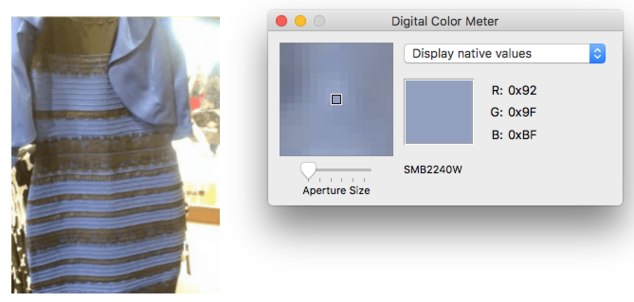-
 quine
119Sellars presents a formulation of sense-datum theory as follows:
quine
119Sellars presents a formulation of sense-datum theory as follows:
X looks red to S = There is a class of red sense-data which belong to X, and are sensed by S.
This formulation is found in Sellars' Empiricism and the Philosophy of Mind. How should we correctly formulate the formulation above in first-order logic? Or, how should we correctly symbolize that in first-order logic? -
 tom
1.5k
tom
1.5k
No idea how or why, but is the above correct? Shouldn't it be something like:
X looks red to S = There is a class of red sense data that belongs to S
or better
X looks red to S = There is sense-data that belongs to S. S has a theory that the sense-data belongs to the class of red sense data. S attaches the label "red" to X. -
 Michael
16.5kI think the claim is that if something looks red in the veridical case then it is red (i.e. the object itself has the property of being red). Therefore, if redness is sense-data then this sense-data is a property of the object itself.
Michael
16.5kI think the claim is that if something looks red in the veridical case then it is red (i.e. the object itself has the property of being red). Therefore, if redness is sense-data then this sense-data is a property of the object itself.
Although my understanding is just based on a brief skim of the paper. -
 Michael
16.5kI see white and gold, but I'm told that it's actually blue and black. As such, one might say that my experience isn't veridical.
Michael
16.5kI see white and gold, but I'm told that it's actually blue and black. As such, one might say that my experience isn't veridical.
I'm not really sure the relevance of the question, though. I'm simply providing the reasoning. So if you have an issue, then it must be with one of the premises. Either redness isn't sense-data or looking red in the veridical case and being red are different things (in which case there's likely conflation on the term "red"). -
 Efram
46Just out of curiosity, could I ask why you wish to do this?
Efram
46Just out of curiosity, could I ask why you wish to do this?
I'm only loosely familiar with first-order logic so I could be mistaken here, but my first guess would be:
If we approach this from the perspective that:
- There are "sense data" belonging to X, which we will call set A.
- There are "sense data" that S is capable of perceiving, which we call set B.
Then we could say:
∃x ∈ A ∈ B
Which translates roughly to, "There exists some property x which belongs to A (i.e. is a sense-datum of X) and belongs to B (i.e. can be sensed by S)."
It may be appropriate to replace B with a formula, but this may just be a matter of preference.
Again, I would urge you to check this with someone else before basing any life decisions on it.
As for the dress: The colour information stored in the image file is that of white and gold. Some people claim that their brains choose to reinterpret this as blue and black - and the originator claims that the dress was in fact blue and black. -
 Michael
16.5kThe sense data is yours and not the dress's. — tom
Michael
16.5kThe sense data is yours and not the dress's. — tom
Except we say that the dress really is blue and black even though I see it as white and gold. So is the blueness and the blackness that the dress really has sense-data? Or would you say that it doesn't make sense to talk about the "real" colour of the dress; only the colour we see it to be (in which case it doesn't make sense to distinguish between veridical and non-veridical colour experiences?) -
 Michael
16.5kAs for the dress: The colour information stored in the image file is that of white and gold. Some people claim that their brains choose to reinterpret this as blue and black. — Efram
Michael
16.5kAs for the dress: The colour information stored in the image file is that of white and gold. Some people claim that their brains choose to reinterpret this as blue and black. — Efram
That's interesting. The dress is actually blue and black, the colour in the image is actually gold and white (well, a bluish silver really), and some people see it as blue and black. The wrong colours in the image allow some people to recognise the real colours of the dress. -
 Terrapin Station
13.8kExcept we say that the dress really is blue and black even though I see it as white and gold . . . — Michael
Terrapin Station
13.8kExcept we say that the dress really is blue and black even though I see it as white and gold . . . — Michael
What I thought Tom was getting at is that it doesn't have anything to do with sense/sensing/etc. until it gets to you. -
 Michael
16.5kWhat I thought Tom was getting at is that it doesn't have anything to do with sense/sensing/etc. until it gets to you. — Terrapin Station
Michael
16.5kWhat I thought Tom was getting at is that it doesn't have anything to do with sense/sensing/etc. until it gets to you. — Terrapin Station
Then I guess the "red" in "the dress is red" is different to the "red" in "the dress looks red", as the "red" in "the dress looks red" is sense-data but the "red" in "the dress is red" isn't? In which case the premise that looking red (even in the veridical case) and being red are the same thing is false? -
 Terrapin Station
13.8k
Terrapin Station
13.8k
Right. I don't believe there's anyone who says that the red of a dress, say, is literally, identically in anyone's head. Thinking that anyone would be saying that seems like a weird, Aspie-ish misunderstanding of language. -
 Michael
16.5kI haven't read enough of the paper to know what Sellars' thoughts are on the matter. But I doubt he picked the definition out of thin air. Presumably there are people (naive realists?) who in some sense think that the red of the dress is "like" red sense-data.
Michael
16.5kI haven't read enough of the paper to know what Sellars' thoughts are on the matter. But I doubt he picked the definition out of thin air. Presumably there are people (naive realists?) who in some sense think that the red of the dress is "like" red sense-data. -
 Terrapin Station
13.8kI'm a naive realist, by the way. What I always point out is that naive realists are not saying that perceptions are not perceptions. And we're not saying that external stuff is perceptions.
Terrapin Station
13.8kI'm a naive realist, by the way. What I always point out is that naive realists are not saying that perceptions are not perceptions. And we're not saying that external stuff is perceptions. -
 Michael
16.5kI'm not tied to the notion that naive realists believe this. I'm just suggesting that there are likely people who do. It seems like a perfectly understandable thing to believe prior to any in-depth scientific analysis.
Michael
16.5kI'm not tied to the notion that naive realists believe this. I'm just suggesting that there are likely people who do. It seems like a perfectly understandable thing to believe prior to any in-depth scientific analysis.
Welcome to The Philosophy Forum!
Get involved in philosophical discussions about knowledge, truth, language, consciousness, science, politics, religion, logic and mathematics, art, history, and lots more. No ads, no clutter, and very little agreement — just fascinating conversations.
Categories
- Guest category
- Phil. Writing Challenge - June 2025
- The Lounge
- General Philosophy
- Metaphysics & Epistemology
- Philosophy of Mind
- Ethics
- Political Philosophy
- Philosophy of Art
- Logic & Philosophy of Mathematics
- Philosophy of Religion
- Philosophy of Science
- Philosophy of Language
- Interesting Stuff
- Politics and Current Affairs
- Humanities and Social Sciences
- Science and Technology
- Non-English Discussion
- German Discussion
- Spanish Discussion
- Learning Centre
- Resources
- Books and Papers
- Reading groups
- Questions
- Guest Speakers
- David Pearce
- Massimo Pigliucci
- Debates
- Debate Proposals
- Debate Discussion
- Feedback
- Article submissions
- About TPF
- Help
More Discussions
- Other sites we like
- Social media
- Terms of Service
- Sign In
- Created with PlushForums
- © 2025 The Philosophy Forum







